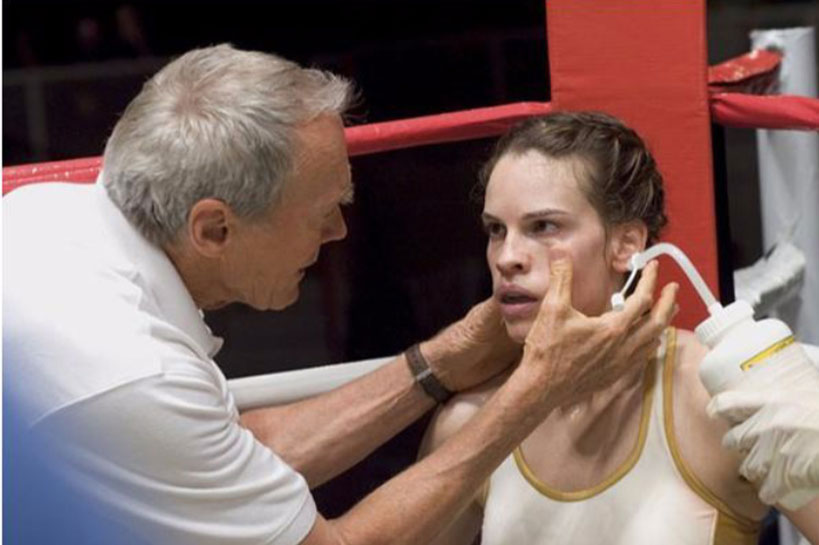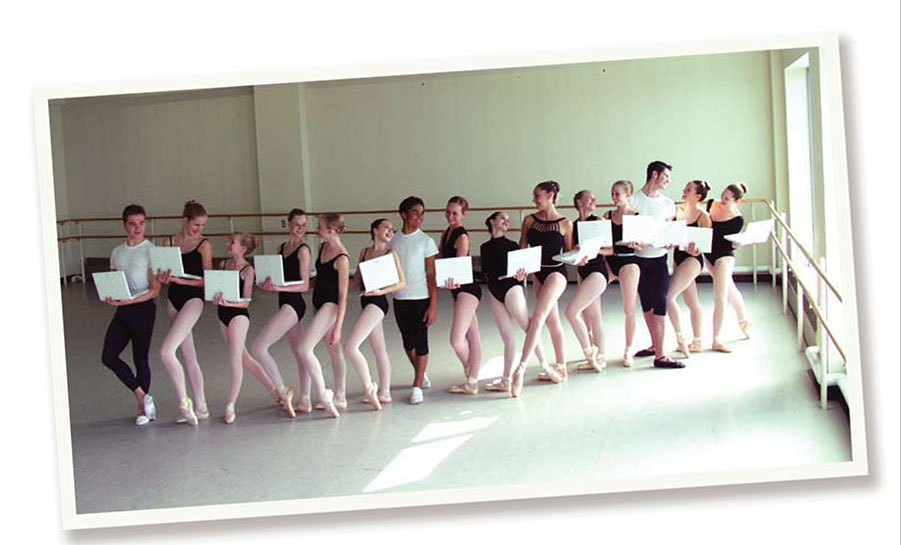A quick fix, or a visit to the emergency room?
Doctors debate how difficult it is to repair broken nose.
When boxer Hilary Swank returns to her corner with a bloody, broken nose in the movie Million Dollar Baby, trainer Clint Eastwood knows what to do.
He waves off a doctor, pushes her proboscis back into shape, jams cotton swabs up her nostrils and tells her she has 20 seconds to finish off her opponent.
Which, of course, she does. End of operation. End of scene.
Aside from the drama it provided for the movie, is this any way to treat a real broken nose? Experts say the average soccer mom should not try Eastwood's trick on the sidelines. But there's some disagreement over how difficult a broken nose is to treat.
According to Dr. Patrick J. Byrne, a broken nose - which is mostly cartilage - can be a complex puzzle. "The type and extent of injury depends upon the direction and severity of the force," says Byrne, director of facial, plastic and reconstructive surgery in the Department of Otolaryngology at the Johns Hopkins School of Medicine. "The upper, middle, or lower thirds of the nose may be involved. The direction of any displacement can technically produce 26 variations of distortion."
Old-time ringside physicians such as Dr. Ferdie Pacheco don't see it exactly the same way. "Noses are fairly simple, easy to fix. You take that piece [of cartilage] that's floating around, which is usually lying next to the nose, and put it back up on the nose and that's it," Pacheco says.
Pacheco, who lives in Miami and is known as "The Fight Doctor," learned about fixing noses on the job, as a general practitioner who worked the ring for Muhammad Ali and other champions.
Pacheco says trainers and cornermen frequently perform the procedure - when they bother to fix the nose at all. "Some people don't fix 'em. And that's why you see boxers with flat noses. It's kind of like a shield," he says.
Eric Waters, who enjoyed boxing as a youth, knows both sides of the broken-nose argument. "I used to box, and I got my nose broke and nobody ever did that for me," he jokes when asked about the Eastwood treatment. But today, as head athletic trainer of the Washington Wizards, when a player damages a nose, he prefers to let a pro handle it.
"A nasal fracture can be put back into place, but we always let an ear, nose and throat doctor do that under controlled conditions," he says.
According to Hopkins' Byrne, who routinely treats injuries from basketball, softball, baseball, wrestling, construction accidents and common brawls, the nose is the most frequently broken extension of the body.
The appendage itself, he says, is a complex structure (mostly cartilage with a bit of bone at the bridge) that doesn't have much built-in wiggle room. "If you're a couple of millimeters too tight on one side of the nose, you may have nasal obstruction, so the stakes are very high," he says.
A punch in the right place can obviously move the nose more than a few millimeters. Still, Byrne says, "Nasal fractures are extraordinarily common, and many heal fine because they aren't significantly displaced. ... It may need no treatment, or just a minor procedure to move the structures to their previous position."
From a medical standpoint, he says, treatment gets more complicated "when the midline structure that separates the nose into right and left sides and supports the outside of the nose gets mangled, when there's a twist to the nose, when the cartilage as well as the bone is involved. Then it can become very difficult."
For surgeons, he notes, changing any aspect of the nose - such as reducing a hump, rotating the tip or changing the width - alters either the function or appearance of another part of the nose. By way of example, he notes boxers who often come to the hospital long after they suffer a so-called saddle nose deformity, which Byrne says results in a ski-jump profile that resembles late comedian Bob Hope (who came by his naturally).
"This often requires us to augment the nose with rib grafts. But due to the contraction of the overlying skin and soft tissue, augmenting the upper third of the nose will likely cause the tip to rotate upward," Byrne says.
At the scene of the injury, it's not unusual for a boxer or participant in another sport to get sideline treatment and go back into the match or game. Although the initial pain is intense and blinding, experts say, it quickly reduces to a dull ache.
Restoring the nose to its original position on the sidelines may make the injury worse, doctors say. What's more important is to stop the bleeding - and there's often a lot of it.
"Pack it off, get it to stop, soak it up," Byrne says.
The classic treatment is known as an anterior nasal pack, which involves placing 6 feet worth of 1-inch-wide, petroleum-jelly-soaked gauze in each nostril. "Most people are surprised you can fit that much into the nose," says Byrne.
If packing isn't suitable, there are astringents and agents that constrict blood vessels, such as neosynephrine or oxymetazoline, commonly found in nose sprays. And there are others. "We use cocaine, usually," says Byrne. A 4 percent solution of the drug - which can stop bleeding and reduce pain - is legal for such treatments.
Although Pacheco rejects going to the emergency room with a broken nose, Byrne and others say it's highly advisable. "The emergency room is and should be the first line of defense with nasal fractures because there is a lot of pain and swelling," Byrne says. It also allows the docor to manage bleeding and rule out other injuries.
The ideal follow-up should be within the first week with an otolaryngologist (a specialist in ear, nose and throat medicine) or a plastic surgeon. "They'll get a formal evaluation and be checked for other injuries to the eyes or adjacent structures," Byrne says.
The Wizards' Waters agrees. His general advice for parents: "If it's anything more than a bloody nose and it's swollen and it doesn't look right, go to the emergency room."


